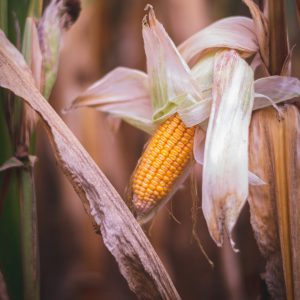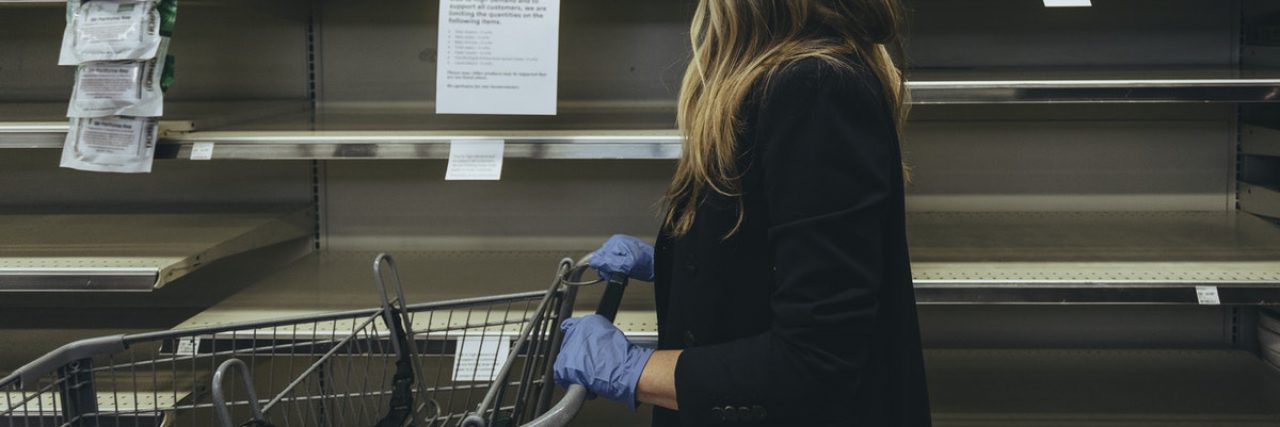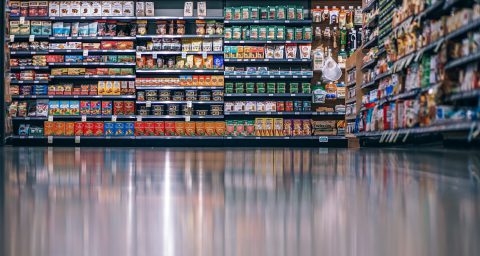
Covid-19 has revealed the fragility of our food systems. Whilst many will suggest that the global pandemic is a one-off shock, you don’t have to look too far back to find the previous shock, and the one before that.
With Covid-19, we are dealing with the latest in a series of disruptions to the food system. It is a stark reminder that we need new interdisciplinary research and decisive action to improve the resilience of our food system to the next big shock, which is inevitably on its way.
In the UK, the food system appears to have weathered the Covid-19 storm based on one measure of food security: availability. Stocks on shelves are almost back to normal. However, the full scale of impacts are only just starting to bubble to the surface.
A drop in food supply is predicted due to the combination of a lack of labour for harvesting, and a lack of confidence in planting for next season, as it is difficult to predict what foods will be in demand. When we look beyond availability as a measure of food security, for example to health, lockdown has seen diets shift towards unhealthy foods with longer shelf lives, with the risk of long-term habit formation.
Where a shock hits the food system is critically important.
Covid-19 was a ‘demand shock’. As we went into lockdown, the food service sector shut down and the retail sector was left to meet demand. No longer able to eat out or at work, consumers became wholly dependent on retailers for their three meals a day, and combined with some initial panic buying, this resulted in empty shelves. However, the food shortage was largely a logistics issue (i.e. getting food to the right places) as we had stocks from Brexit planning, and most trade was able to continue uninterrupted.

In contrast, there is every possibility that the next big shock will be a climate-related ‘production shock’. This would play out very differently to a demand shock like Covid-19.
If food production fails due to extreme weather, less food will be available on the market. But what happens next will depend on market or policy responses to the shock.
For example, a country in a major food-producing region may seek to protect its own food security by implementing an export ban. This could stabilise domestic food prices, but it further reduces the amount of food on the global market, resulting in food price spikes. This invariably hits the poorest the hardest, and we saw in 2007/08 that food price spikes can lead to food riots and political instability.
It’s hard to predict what the next big shock will be, but climate change is very likely to be involved. Our own analysis highlights the potential for multi-breadbasket failure; the chances of extreme weather hitting several major food producing regions of the world at the same time is likely to triple by 2040 [1]. A devastating event that might have occurred every hundred years is more likely to happen every 30 years. There are also several climate-related tipping points that could severely impact the food system [2].
And then there are other potential shocks, like geopolitics, trade, plant and animal diseases, food safety, resource scarcity and biodiversity decline. Importantly, we need to recognise that these shocks are unlikely to occur on their own, and there is huge potential for cascading risks.
How might a plant disease outbreak interact with a widespread drought and reinforce one another? Or more immediately, how might a second wave of the pandemic interact with a no-deal Brexit and a global recession?
The key question is how do we build resilience to multiple shocks into the food system?
As always with food systems, each country will have its own approach to increasing the resilience of its food supply chains. However, the first priority is to assess the unique set of challenges that a country is facing.
In the UK, for example, we import the vast majority of our fruit and around half of our vegetables, so if a shock disrupted our imports this would have significant ramifications for the nation’s health.
Broadly speaking, there are three major ways to increase resilience of the food system and they all come with costs:

- The first involves building slack into the food system through redundancy, for example by increasing food storage capacity.
- The second is the diversification of the food system, in the hope that a shock will only hit part of a country’s portfolio. This approach goes beyond diversifying crops, livestock, seafood and management practices, and includes diversification of food processing, manufacturing, retail and consumption.
- The third is increasing the resilience of food production to climate change through biology and best practice farming. This year’s low wheat harvest is a case in point. Only 40% of wheat could be planted due to heavy rain, and the droughts and rainfall that followed have produced poor quality crop with potentially 40% lower yields.
A window of opportunity
Interdisciplinary research, in collaboration with government, business and civil society, is central to preparing the food system for future shocks. Collective and decisive action is then required, and the best way to achieve this is to have all stakeholders involved in the research from the outset.
We also need to consider the whole food system when developing interventions, to prevent positive changes in one part of the system from adversely affecting another. For example, diversifying for crops that could boost resilience, that people then don’t want to eat and that go to waste.
Finally, we need to consider if resilience means bouncing back to ‘business as usual’ or if we should set our goals higher.
Disrupting the status quo is arguably the hardest part of food system transformation, so the Covid-19 crisis has created a window of opportunity to build a better food system – one that delivers for resilience, health and sustainability, all at the same time.




From an Agricultural background and with 30 years selling produce to the supermarkets I am extremely aware of the importance of geographic spread, microclimates and soils in agricultural food production In the UK. An example was the supply of Iceberg lettuce. We grew this in Scotland, the north west, west Kent, east Kent, the fens and south coast. Invariably when one area was hit with problems another area would pick up the slack. Combined with this was fewer transport miles and rapid response to order changes to each depot when everything ran smoothly.
We seem to have forgotten these benefits.
I am deeply concerned the Government have allowed 3 square miles of rare grade 1 Agricultural land in the isle of Thanet to be irreversibly lost to housing. Thanet has unique microclimate as it is surrounded by sea. Wheat yields this year Have bucked the national trend and have been excellent, premium potato yields are at record levels and award malting barley is grown. The farmers are tenants, they do not want to lose their land and viability. They will unwillingly lose 20%/1000 football pitches worth of this valuable land.
I believe this urgently needs to be reconsidered. Geographic spread and soil types should be closely evaluated and areas protected as vital ‘natural capital’. Allowing this gradual erosion of rich souls and productive areas is the absolute reverse of what we as a country should be doing right now.
Added to the loss of land is farming viability. Farmers are fighting for survival when they should be focusing on environmental improvements.
The farmers who know their land will be lost to agribusiness. This is beginning to happen as hundreds of acres of maize is grown in Thanet instead of food ,to supply the local AD plant at vast subsidised multimillion profits. This has a negative impact on the environment.
How are we as a nation going to reverse this absolute madness?
Dear Riaz,
Interesting to read your latest article. Apart from the social impact of COVID and the economic impact of the lockdowns, we have the joys of Brexit to come!
Unfortunately, our leaving the EU falls in the middle of winter when fruit and vegetable stocks are at their highest dependency on supplies from Europe.
For the reasons you state, this a very concerning period, both in the pressure this will contribute to the existing UK food systems, but also 2021 looks like it will bare the brunt of a delayed shock wave to follow.
This is a perfect tsunami made up of food availability, an increased supply chain , added bureaucracy and inevitably a steep rise in retail costs.
However, the hidden whammy is that the new UK Agriculture Bill that has just passed through Parliament without a radical plan to accommodate the level of disruption to come. Notably, the omission of any inclusion of any national food policy that addresses or includes urban agriculture?
I note that there is no mention or recognition of the potential significant role urban agriculture in your article or indeed the Oxford Paper UK FOOD SYSTEM
by UKRI??
We know from the latest UKRI report that the EU exports around 23% of the UK’s
fruit and veg. This importation will not be entirely lost but by potential import tariffs or the new layers of paperwork, but the UK will be inevitably become
more vulnerable as a result. Yet we know that if we were to create a paradigm shift in harnessing urban cultivation, most UK cities could optimise growing opportunities and provide 20-25% of local fresh food food supplies.
My question why hasn’t Urban Agriculture day come?? Or been evaluated.
Thank you.